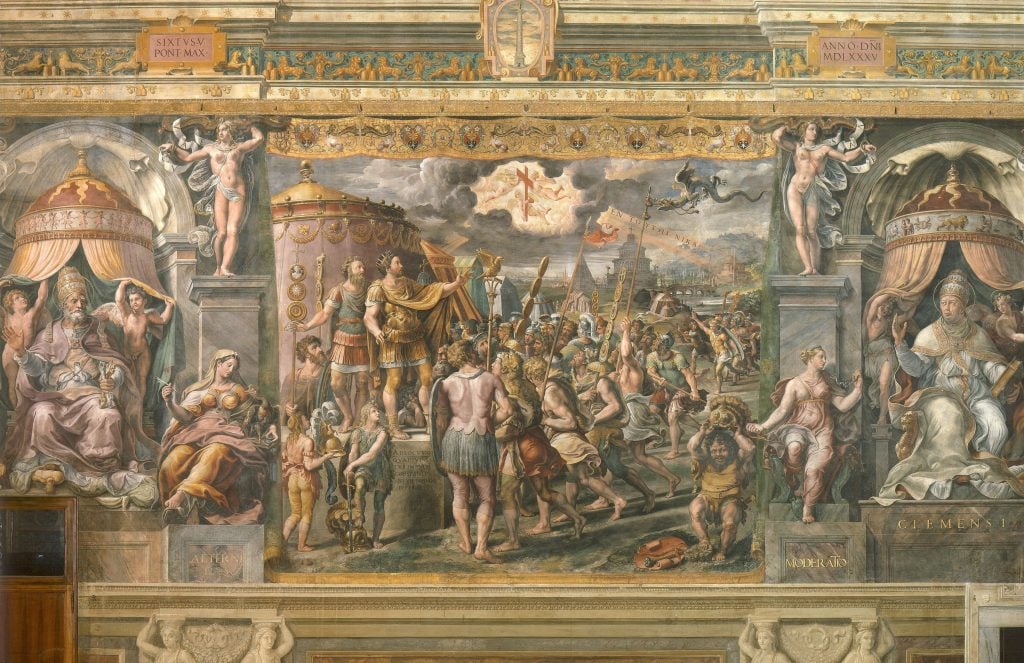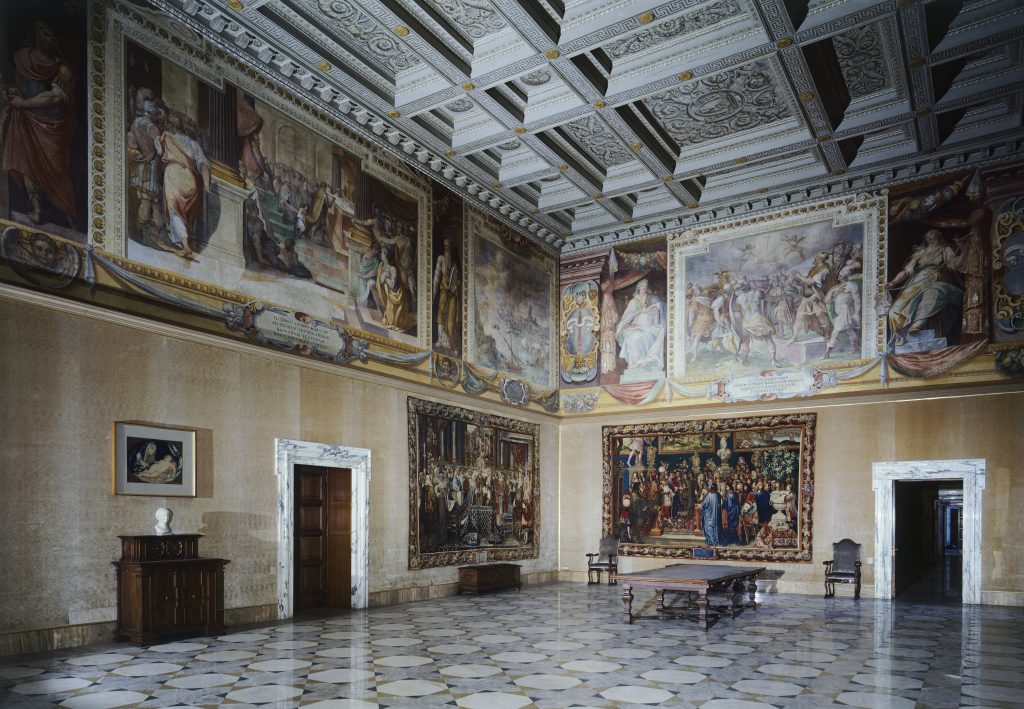The Vatican Museums have finally unveiled the finished restoration of the stately Hall of Constantine, one of its renowned Raphael Rooms. As the monumental 10-year project draws to a close, museum officials have announced a major art-historical discovery made during the meticulous conservation process.
It had long been assumed that the Hall of Constantine was painted only by Raphael’s assistants after his death. Over the course of the restoration, new evidence emerged that he in fact finished two figures in the hall and had begun making preparations to continue before he died.
“With this restoration, we rewrite a part of the history of art,” Barbara Jatta, the director of the Vatican Museums, told the AP. “We have two more Raphael’s in our catalog.”

The Apparition of the Cross to the Emperor Constantine (1517-1524). Photo: Fine Art Images/ Heritage Images/ Getty Images.
Masterpieces to rival the Sistine Chapel, the magnificent Raphael Rooms are so-named for the renowned Renaissance master who was commissioned to complete them by Pope Julius II in 1509. The extensive project had been underway for a decade when Raphael died in 1520, at the age of 37. His three assistants Giulio Romano, Gianfrancesco Penni, and Raffaellino del Colle completed the Hall of Constantine according to Raphael’s plans, painting various scenes from the life of Roman Emperor Constantine that celebrate the story of Christianity over paganism.
Our understanding about Raphael’s contributions to the Hall of Constantine have changed thanks to historical reports of the young master’s preference for painting in oil onto the wall, rather than the traditional frescoing technique of applying water-based pigments to wet plaster. Raphael preferred the richness of color achieved by using oils, but had to invent a unique technique that involved nailing a natural resin surface to the wall, onto which he painted.

Hall of Constantine. in the Vatican Museums, Vatican City, 16th century. Photo: DeAgostini/ Getty Images.
As such, the discovery that two female allegorical figures in the hall, Justice and Friendship, had been painted with oil paint allowed conservators to determine that they were by the hand of Raphael. The rest of the hall is painted using traditional methods, since the artist’s assistants were never able to master his oil technique.
Further, the conservators discovered metal nails under some of these plaster frescoes, which they believe were likely inserted to hold in place more of the resin surface for oil painting. Unfortunately, Raphael’s work was interrupted by his untimely death. As Jatta noted, “this is exactly the moment when he left [the room].”
“From a historical and critical point of view, and also technical, it was truly a discovery,” according to one of the conservators, Fabio Piacenti. “The technique used and planned by Raphael was truly experimental for the time, and has never been found in another other mural made with oil paint.”
The restoration of the Hall of Constantine began in March 2025 and was completed in December 2024. The space was only partially closed to the public.
.png)




